Should You Invest In Andy Warhol?
Almost everyone is aware of Andy Warhol and his impact on pop and postmodern art. From the Exploding Plastic Inevitable multimedia touring show, which introduced the world to the music of The Velvet Underground, to his iconic silkscreen depictions of Marilyn Monroe, there seemed to be no limits to Warhol’s experimentation and genius. And though he has been gone for over 30 years, Warhol’s art continues to inspire people to this day.
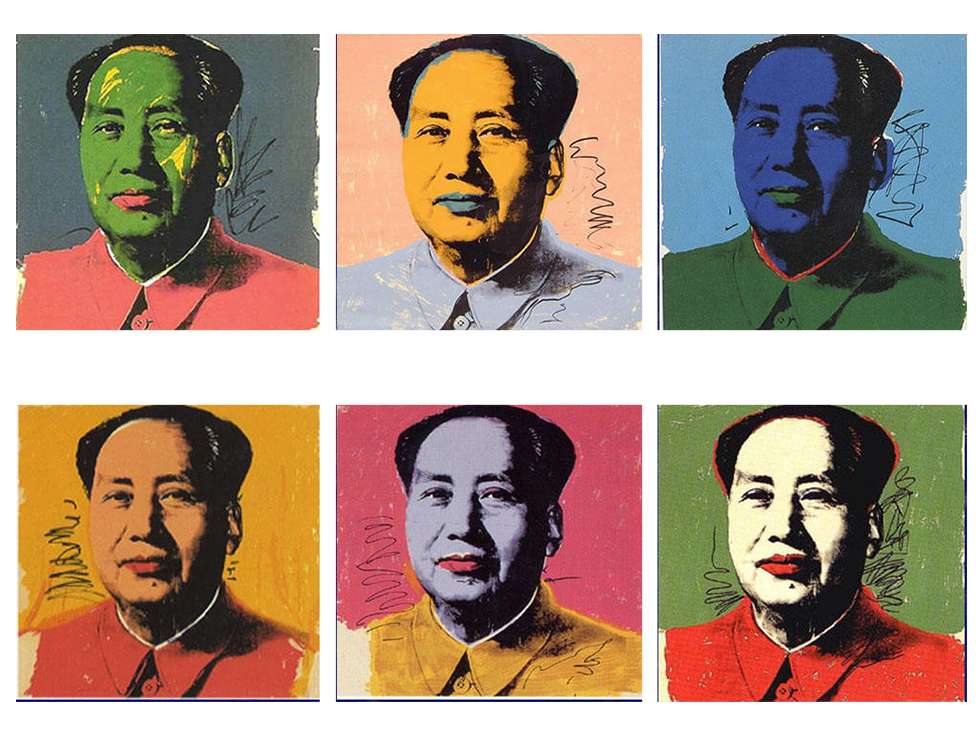
Warhol’s work is not just valuable to art critics and fans, either. As investors look for stable alternative assets to balance out their portfolios, more and more of them are turning to the art world for guidance. As one of the most successful artists of the modern era, Andy Warhol presents an intriguing opportunity for investors with the necessary capital.
However, Warhol’s status poses some important questions to those who want to invest in art. Does it make more fiscal sense to buy prints or original paintings, and what kind of long-term returns can you expect with a Warhol painting? And, most importantly of all, should you invest in Andy Warhol?
We will answer all of these questions and more, but first, let’s look at the real costs of investing in Andy Warhol’s art.
How Much Are Andy Warhol Paintings Worth?
The sale prices for Andy Warhol’s pieces vary widely, depending on a number of factors including consumer demand, the age of the piece, and its original sales price. An original Warhol painting could cost anywhere from $600 to over $100 million, while prints are much cheaper than the originals they are based on. However, even the prices of Andy Warhol prints can vary, depending on the total number of similar prints in circulation.
Let’s look at a few concrete examples to get a better idea of the initial costs you can expect:
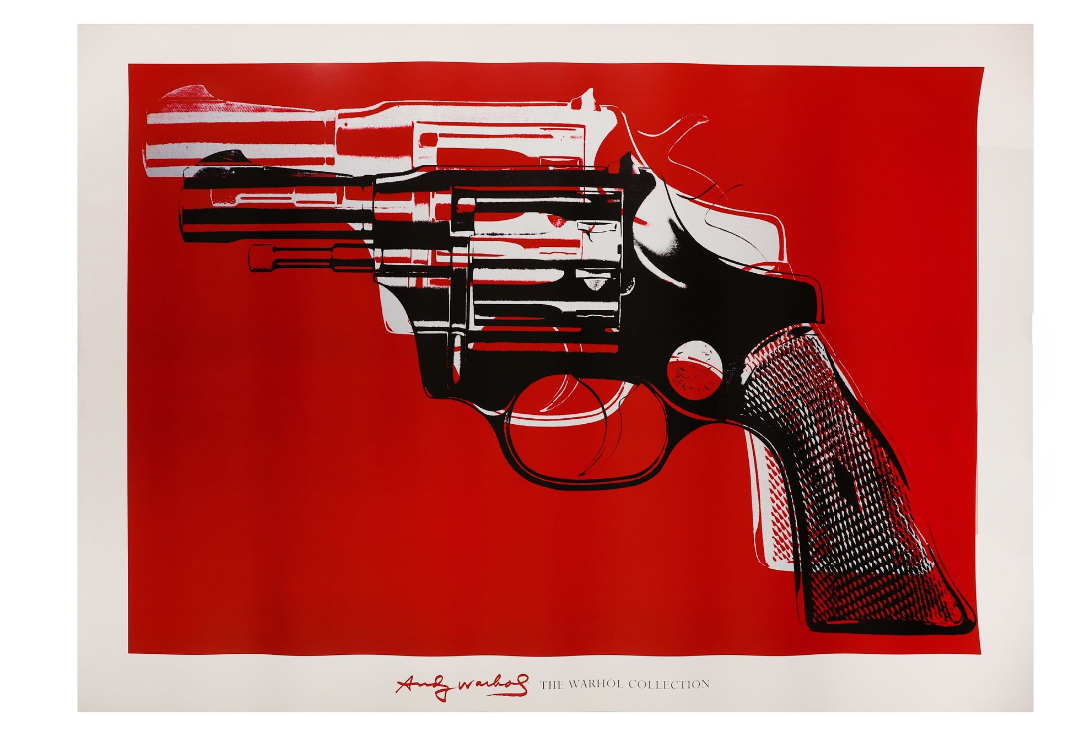
Gun (Andy Warhol, 1981)
According to Masterworks, Andy Warhol’s 1981 painting Gun is currently valued at $10,245,000. However, if Gun were put up for auction today, its actual sale price might vary wildly, whether that is much lower, or significantly higher. Nonetheless, this should give curious investors a general idea of how much a “blue-chip” Andy Warhol original might cost.
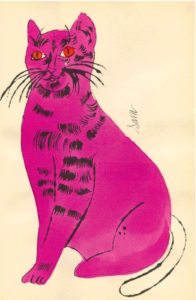
Cats Named Sam (Andy Warhol, 1987)
As we noted above, you don’t have to be a millionaire to invest in Andy Warhol. For example, one of the paintings in his Cats Named Sam series is currently valued at just $7,500, making it one of the cheapest Andy Warhol works to buy. Again, the worth of a Warhol painting can fluctuate, but as you can see, the amount you need to invest in an Andy Warhol original will simply depend on your particular tastes and budget. No matter how affordable the piece is, there’s no point purchasing one if you don’t actively like it on its own artistic merits.
Investing in Andy Warhol Prints
If you’re not ready to dive head-first into an art investment, you also have the option of purchasing an original Andy Warhol print, many of which are only available in limited editions. However, it’s important to note the distinction between original prints and reproductions: the latter are simply mass-produced copies, with virtually no value to any art collector or investor. By contrast, an original print is one of a limited number of reproductions, and is designed to closely resemble the original artwork. In some cases, prints are not reproductions at all, but completely original works of art by the artist themselves, which have been duplicated for sale.
The value and cost of a print are closely linked with the total number of prints put out in a given edition. Each one is marked with what looks like a fraction: the top number represents the where in the sequential order of reproductions that particular painting was made, while the bottom number represents the total number of reproductions in the edition. Generally, the lower the value of both numbers, the higher the value of the print.
So, what can you expect to pay for an Andy Warhol print? A high-quality print (also known as a Giclée print) of an Andy Warhol piece can start around $2,000, and go up from there. However, once again, the value will depend on the demand, the number of prints in the edition, and wider factors in the art world at large. And although prints are cheaper, they also don’t accrue as much value over time as original, one-of-a-kind paintings.
Now that you know what to expect on the front-end of your investment, it’s time to evaluate the long-term returns of an Andy Warhol painting.
What Kind Of Long-term Returns Can You Expect With A Warhol Painting?
It’s important to remember that while art is more tangible than most other classes of investment, it is also non-liquid, which means you won’t see any return on it until you decide to sell. As such, if you’re an impatient investor, art may not be the right avenue for you. However, if you’re willing to hold out, you could end up seeing huge returns with an Andy Warhol painting.
While the value of every Andy Warhol piece goes up and down based on popular demand, art generally accrues a great deal of value over time. Since Warhol was one of the most popular artists of the 20th century, it stands to reason that investors would see particularly high investments with his paintings. But don’t take our word for it. Let’s look at a few examples with the sales price and current value (as of 2020) according to the Masterworks trading network:
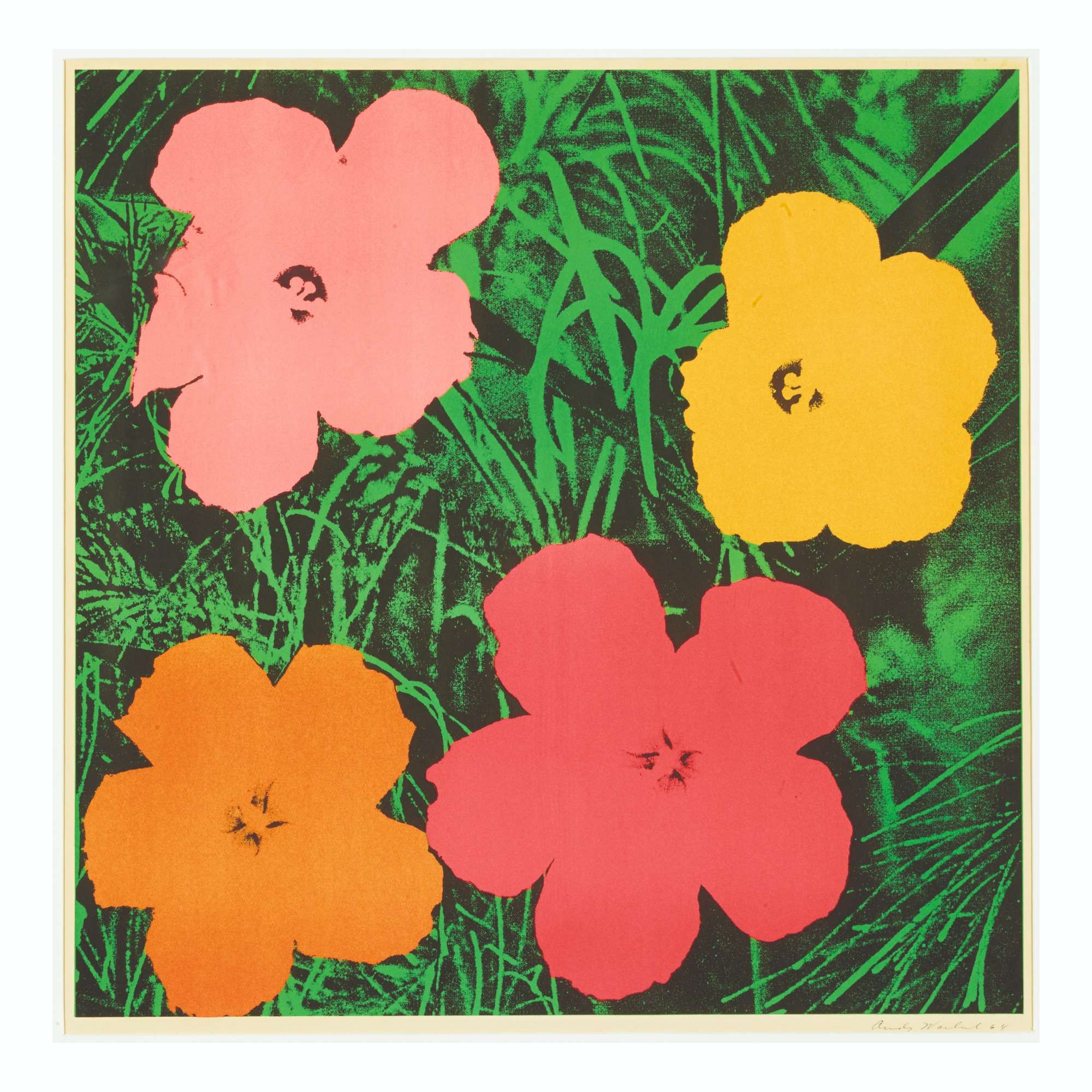
Flowers (Andy Warhol, 1964)
We’ll begin with Flowers, one of many similar paintings based on an issue of Modern Photography that Warhol found particularly inspiring. This painting sold in 1992 for $46,200. In the 28 years since its sale, 'Flowers’ value has increased nearly a hundredfold, to roughly $4,200,000. As modern art in particular tends to increase in value over time, this number is likely to rise even higher in the coming years.

Mao Tse Tung (Andy Warhol, 1972)
Warhol produced dozens of silkscreens portraying Chairman Mao Tse Tung in the early 1970s, and the version pictured above sold at auction for just over $1 million in 2001. Fast forward 19 years and this Warhol masterpiece is now valued at $47,514,000 — an increase of 46 times its original value!
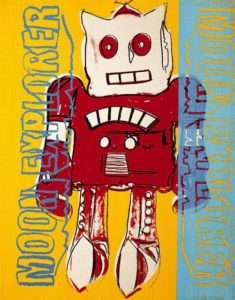
Moon Explorer (Andy Warhol, 1983)
As previously stated, not all of Andy Warhol’s works require multi-million dollar investments. For example, Moon Explorer (pictured above) sold for $18,670 in 2015. Just 5 years later, it has already been valued at $23,500, an increase of 1.26 times its sales price. Given the short amount of time since its sale, the increase is relatively low compared to works which have had more time to accrue value. This is why most art critics and experts recommend sitting on an art investment for at least 10 years before you decide to sell.
Should You Invest In Andy Warhol Art?
Despite the common misconception that art is a risky alternative asset, it is actually one of the most stable and continuously lucrative investments you can make. While paintings and other works of art do not return regular dividends or accrue compound interest, they also don’t react to the ebb and flow of traditional financial markets. This means that art is virtually recession-proof, making it one of the safest and smartest ways to diversify your portfolio.
As for why you should invest in Andy Warhol specifically, it is the artist’s own diversity which offers the appeal, having created thousands of art pieces in a wide range of styles, available for a corresponding gamut of prices and values. Therefore, while Warhol’s paintings tend to be expensive, they are not completely inaccessible to investors who relatively are short on cash.
Surprisingly, the accessibility of Warhol paintings has not diminished their value either. In fact, Warhol’s pieces are some of the most valuable pop art paintings in the world, as well as some of the most valuable paintings from any art movement or period. And since the majority of his paintings were created within the last half-century, they still have plenty of time to age and accrue even higher values in the future.
In short, if you have the capital to invest in an original Andy Warhol or limited edition Warhol print, it could be an extremely lucrative addition to your portfolio.
On average, art appreciates in value by approximately 3.97% per year, with “blue-chip” pieces by big-name artists like Warhol rising by significantly higher rates, as illustrated in the examples above. Warhol’s paintings have proven to be some of the safest and most profitable investments in the art world and, as an added bonus, you get to be the proud owner of a painting by one of the world’s most beloved artists!
That said, you should always proceed with caution when investing in art. When you invest in a piece from any artist, you will need to consider how much you can reasonably invest, and the level of risk you can take on for the long-term. You should never invest in art if you can’t afford to sit on a painting for at least 10 years. Most importantly, make sure that you’re acquiring his work from a reputable source so that you know you’re getting an authentic Andy Warhol painting!
If you’d like to find out how you can invest in Andy Warhol and make art an alternative asset for your portfolio, contact ArtLife today.